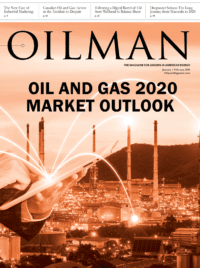Industrial businesses in the energy sector have long doubted the merits of advertising and marketing.
Back in the day, industrial businesses didn’t really need to do a lot of marketing to find customers. If someone needed a specific component or product, they often had designated companies they would take their business to or they’d check a directory like the Thomas Register.
Of course, with the advancement of technology and the internet, industrial buyers changed the way they searched for products and services. According to a report by Forrester, 68 percent of B2B customers prefer to research independently online (Wizdo, 2017). So, industrial businesses had to adapt and move into the digital space, however, many in the energy sector are still somewhat skeptical of using marketing and advertising to drive business.
Much of this skepticism is derived from an inability to see the return on investment received from advertising campaigns. While impressions and clicks tend to be the language of media companies, most industrial businesses are more concerned with leads generated and dollars made.
To combat this problem, most industrial companies tried to use targeted landing pages with forms in an attempt to capture reader data for follow up. Unfortunately, on average only around 3 percent of people who hit your website are going to fill out a form (Saleh, 2018). Which in turn, means you’re missing out on 97 percent of your web traffic and have limited options to nurture them.
Another option B2B businesses had was to look for publications that provide advanced reporting and analytics. However, the definition of advanced reporting changes from publisher to publisher, so it’s important to determine exactly what is included.
Some publications offer static lead generation report. These reports may simply state the companies that interacted with an advertisement or may include everything from the full name, title, company, and business email. Obviously, the full details are more appealing to advertisers as it provides deeper insight into exactly who showed interest.
While static reports are valuable, they are still limited in terms of identifying what happened post-click. Did the subscriber click on the ad and then exit out of the website right away? Did they stay and explore content? Did they come back later? Basically, are they actually showing purchase intent?
These are all questions whose answers would dramatically improve your ability to qualify
the lead. That’s where conversion software comes in.
Conversion software gives advertisers the ability to see lead attribution and follow the journey of leads as they travel through the sales pipeline. ActiveConversion, the leading provider of conversion software in North America offers a unique advantage to advertisers as it offers integration with specific industry publications, such as OILMAN Magazine. This integration allows advertisers to automatically identify subscribers visiting their website from the media publication. From there, they can see when the lead returns and are automatically notified of the best time to reach out.
B2B sales cycles tend to be far longer than their B2C counterparts. In B2C scenarios, an advertisement in a publication can turn into an immediate purchase. Take an advertisement for some sunglasses as an example. An ad could be clicked and an order for the glasses could be made in minutes, if not seconds. But comparatively, if the advertisement is for expensive industrial heating equipment, chances are a sale won’t be made until weeks or months after the initial ad click.
This delay between click to purchase makes it incredibly difficult to determine attribution and overall ROI of industrial marketing campaigns. Conversion software takes the guesswork out of determining which campaigns are actually working by providing detailed reports on lead activity from initial click to final purchase. That way you can tweak your marketing spend to invest more in your top ROI activities and cut spend where the value is limited.
Industrial companies are using these tools to transform the way they market and sell to their buyers. To remain competitive in today’s volatile markets, industrial businesses must leverage these technologies or risk extinction.
References
Saleh, Khalid, “The Average Website Conversion Rate.” Invesp, November 2018, https://www.invespcro.com/blog/the-average-website-conversion-rate-by-industry/
Wizdo, Lori, “The Way and Means Of B2B Buyer Journey Maps: We’re Going Deep at Forrester’s B2B Forum.” Forrester, August 21 2017, https://go.forrester.com/blogs/the-ways-and-means-of-b2b-buyer-journey-maps-were-going-deep-at-forresters-b2b-forum/
Photo courtesy of Active Conversion
Gail Moch has a background in B2B marketing & technology that she now uses in her role as Marketing Manager at the industrial sales & marketing company, ActiveConversion. She graduated from the University of Calgary with a Bachelor of Commerce in Marketing and shares her insights on various blogs and newsletters in North America. Gail has a passion for innovation and creativity that she applies to all aspects of her life. When she isn't at the office, Gail can be found relaxing at home with her husband and two dogs.






